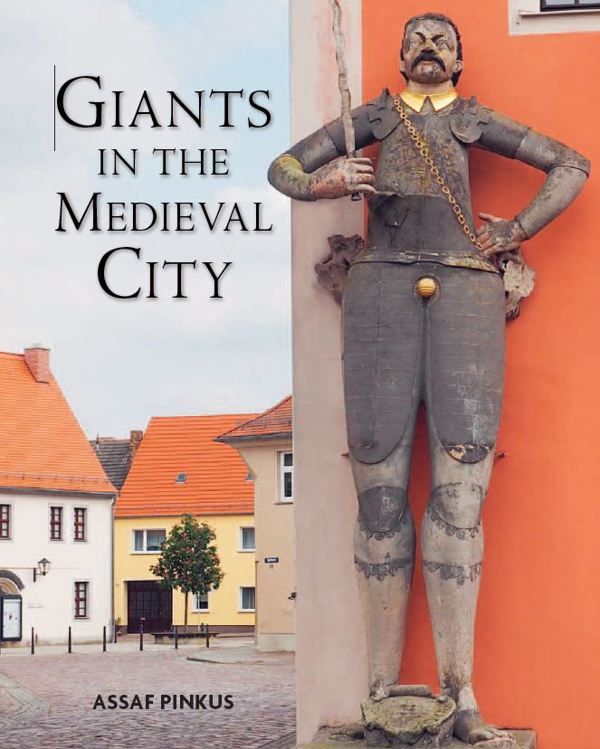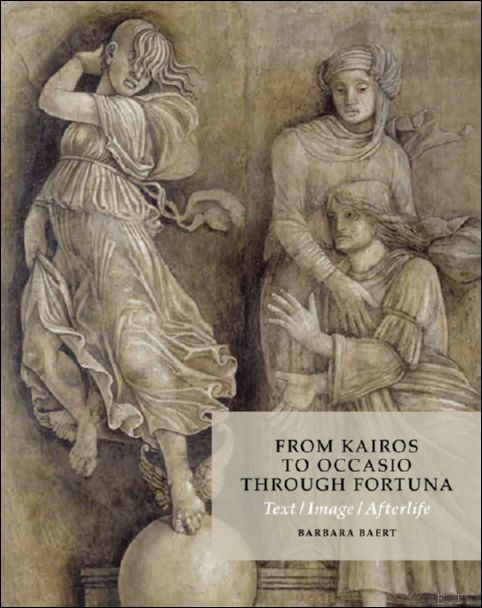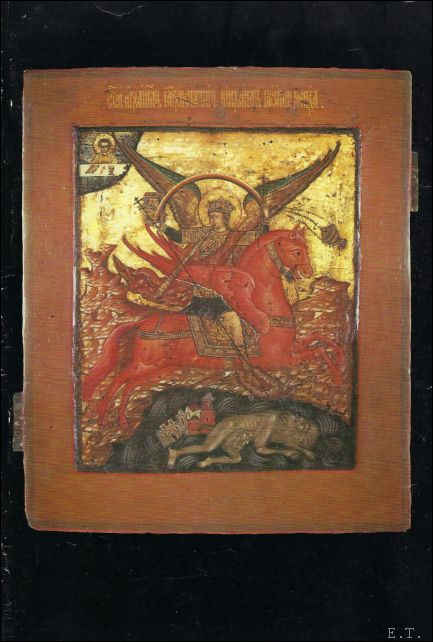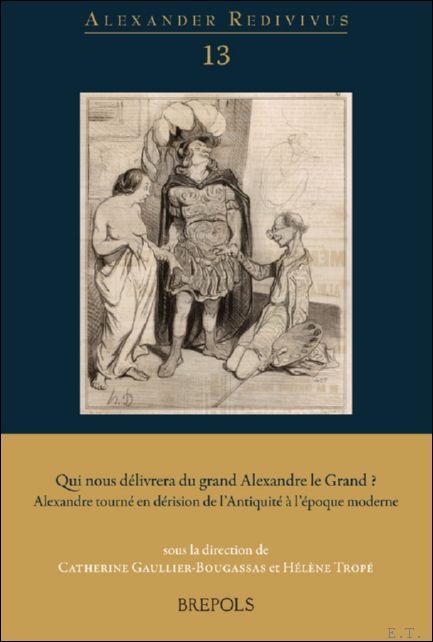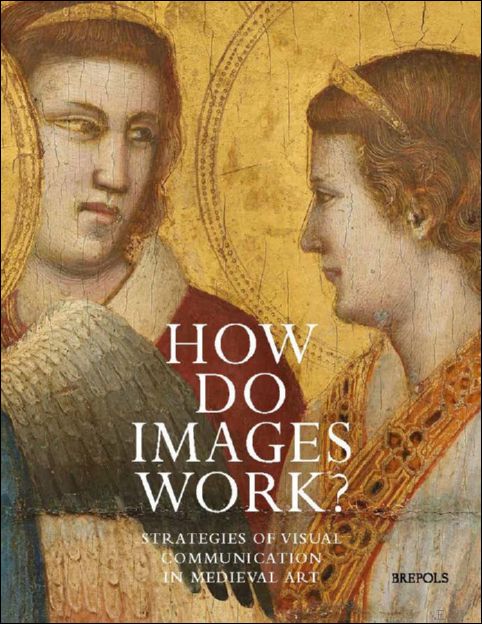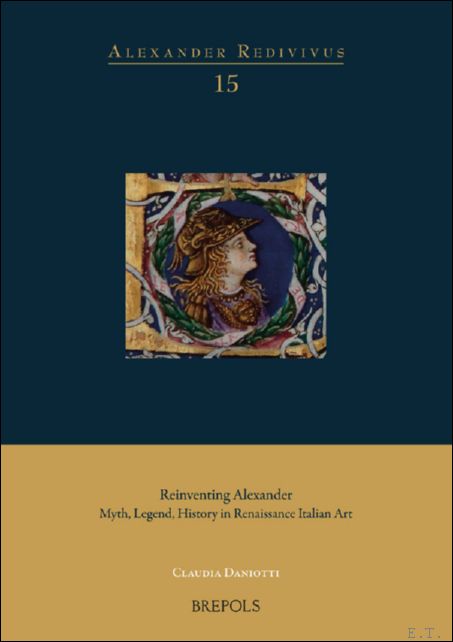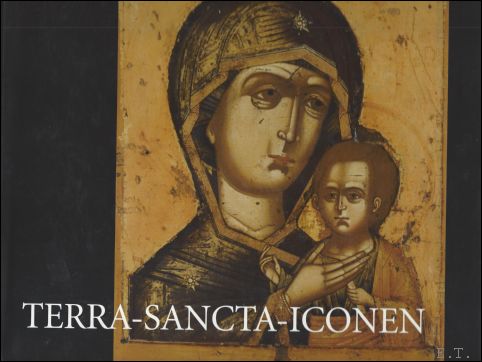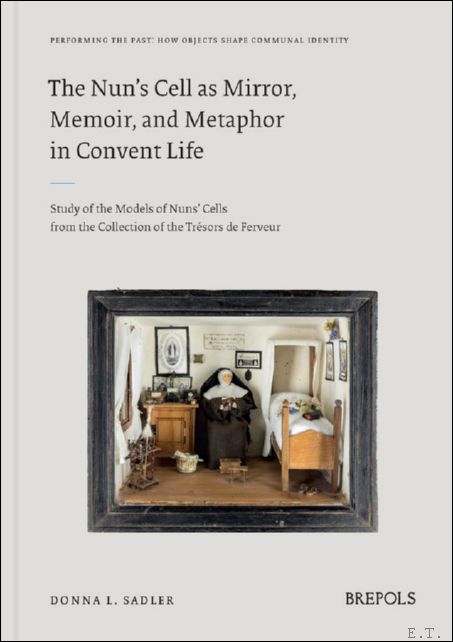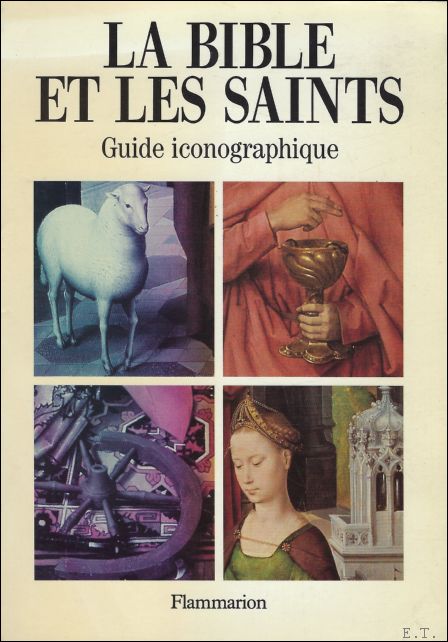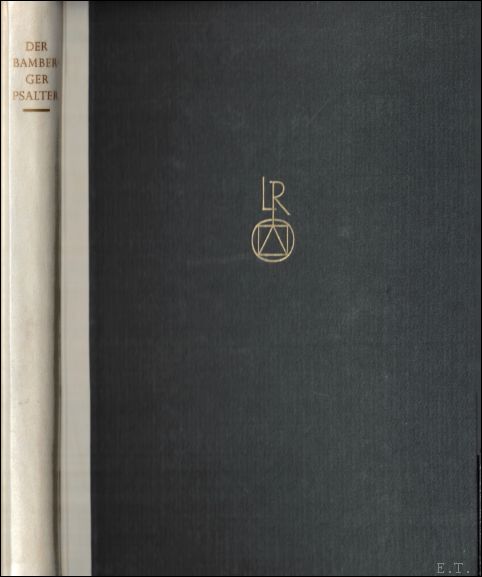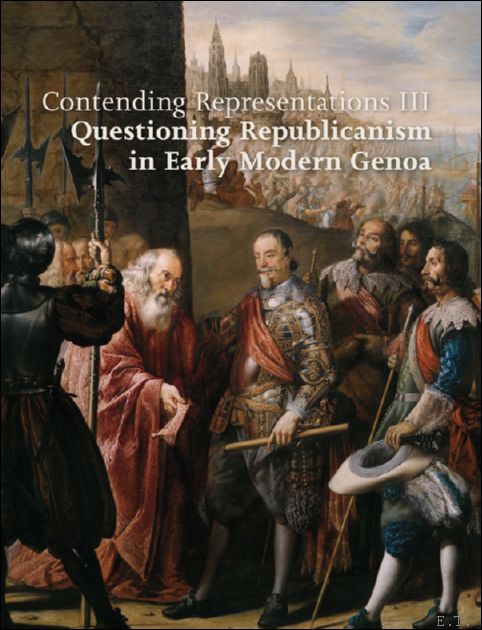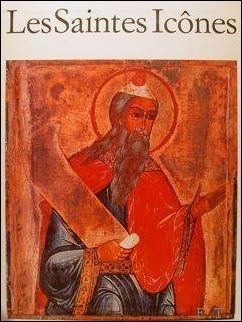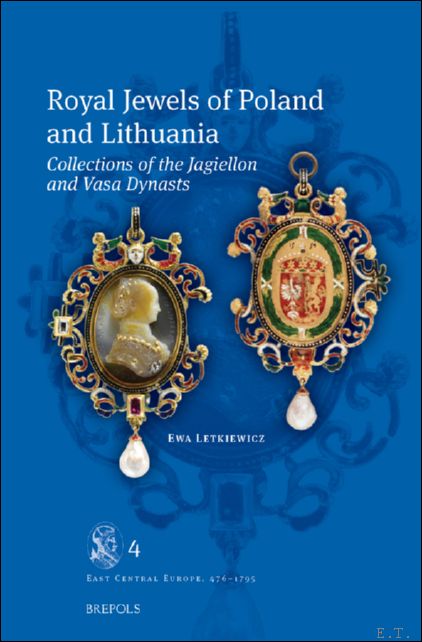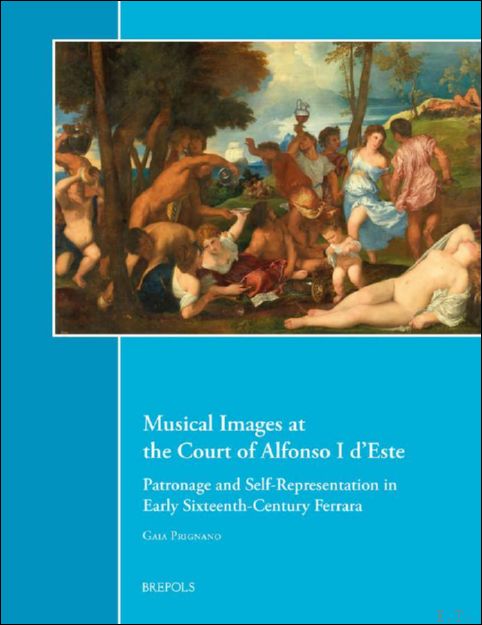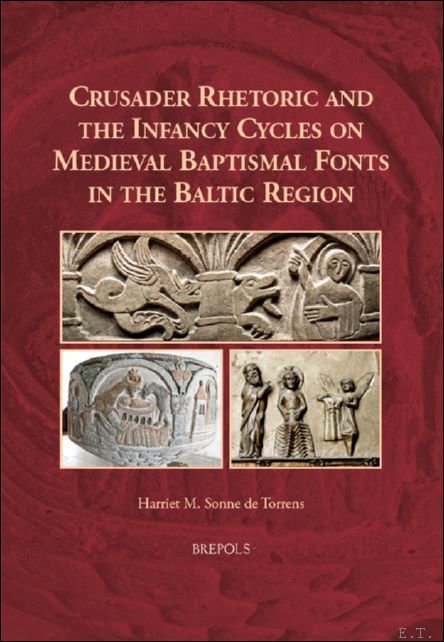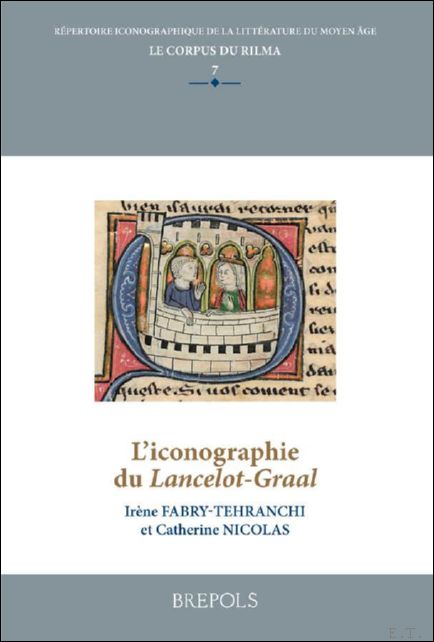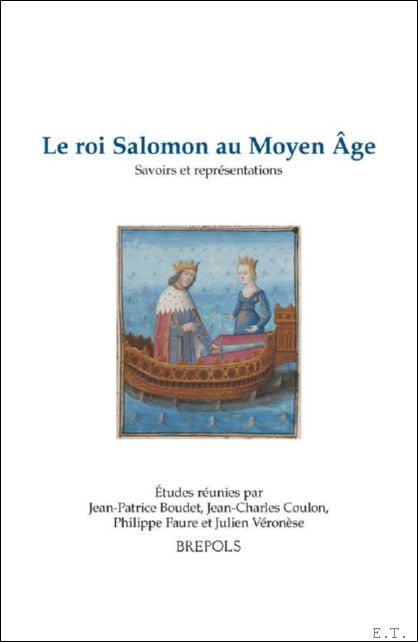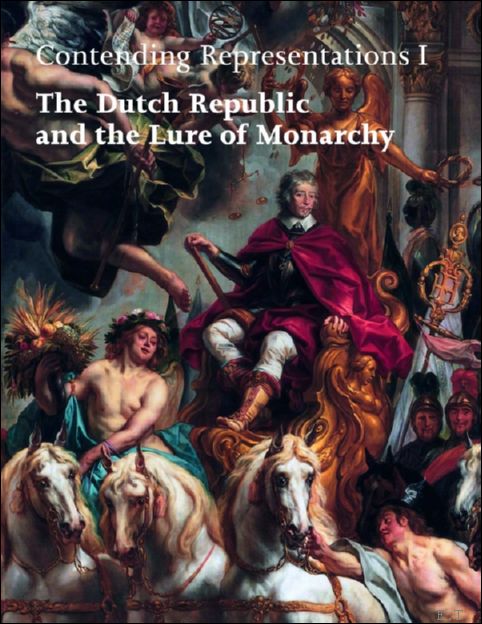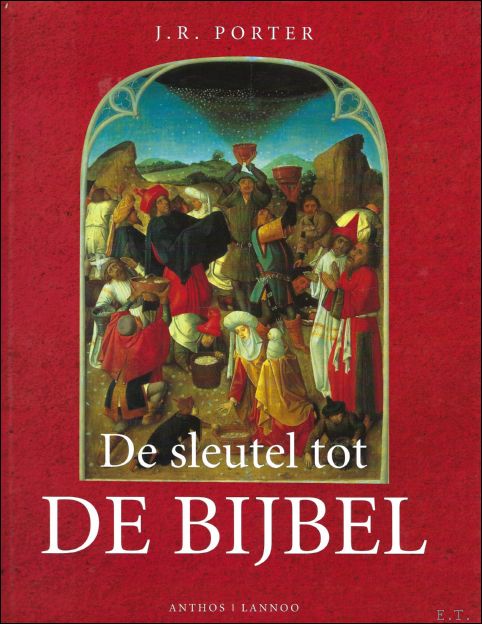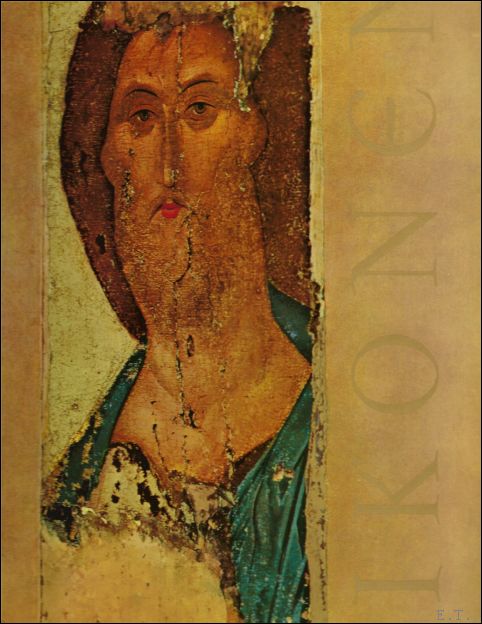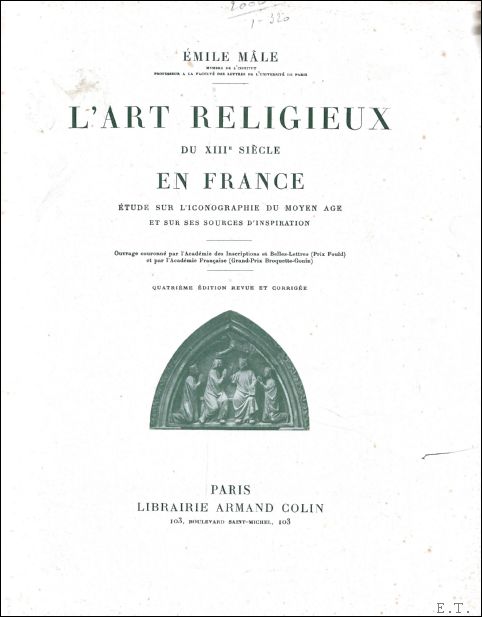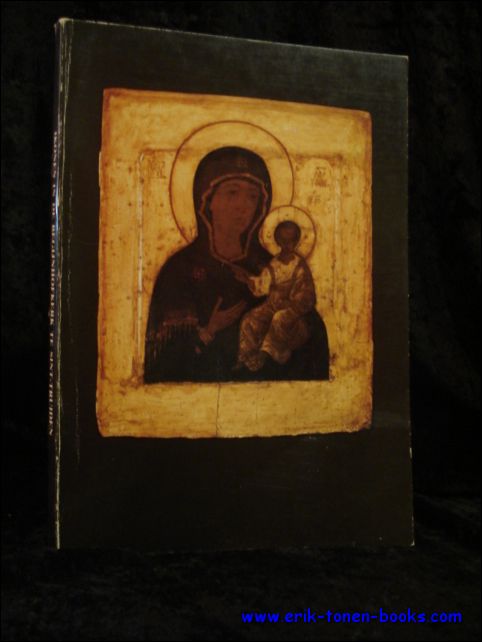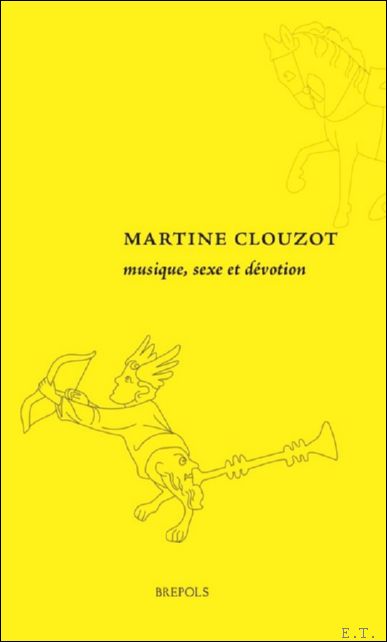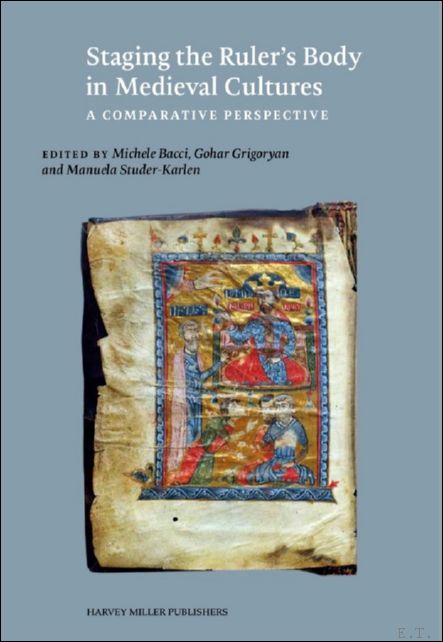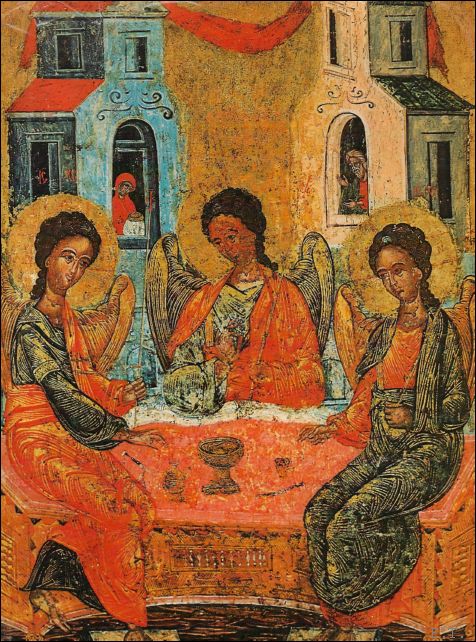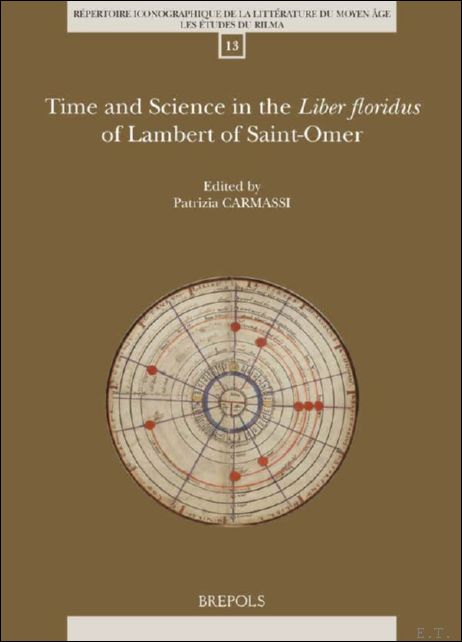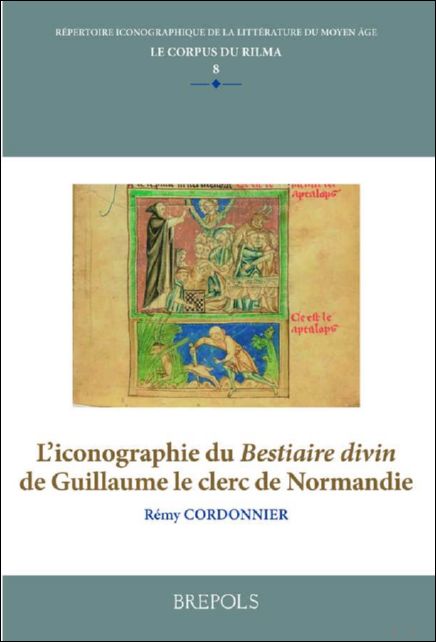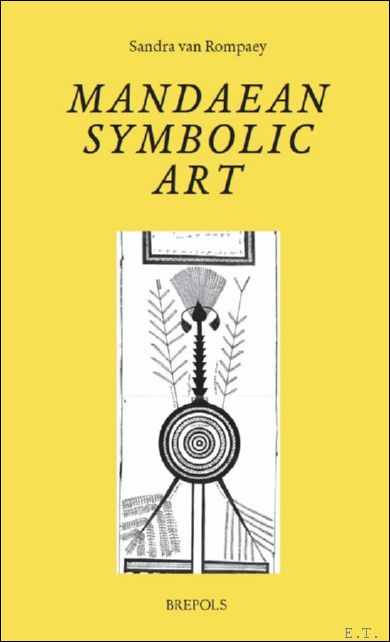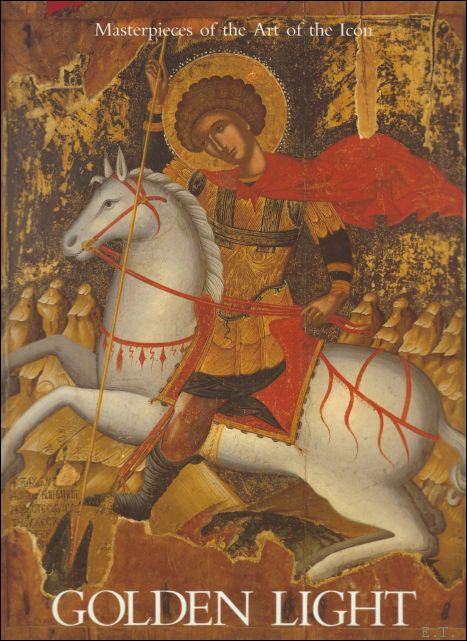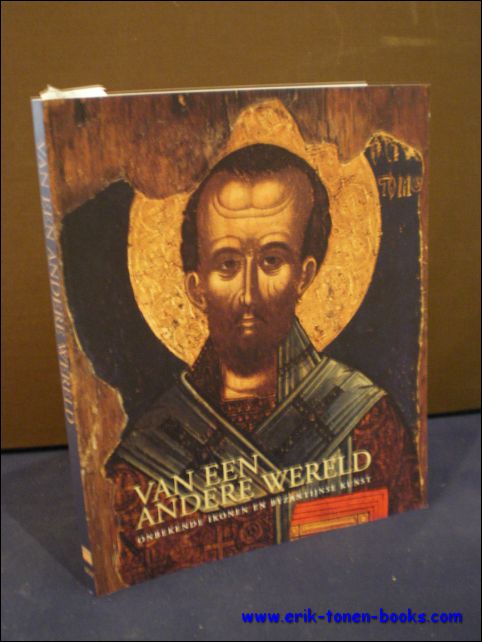Iconograpic
41 books found
( TENTOONSTELLINGSCATALOGUS ).
ICONES BULGARES DU IXe AU XIXe SIECLE.
Bruxelles, Musees Royaux d'Art et d'Histoire, 1977. Broche sous couverture illustree, 175 x 240mm., pages ne pas numerotees, illustrations en b/n et en couleur.
Exposition a eu lieu du 26.11.1977 au 12.2.1978. Couverture dechiree.
Booknumber: 15253 | Price: EUR 10.00
ALPATOV, M.V.
TREASURES OF RUSSIAN ART OF THE 11TH-16TH CENTURIES.
Leningrad, Aurora, 1970. Bound, cloth, illustrated paper jacket, 200 x 280 mm., 288 pp., profoundly illustrated in colour and b/w.
Dedication from former owner on title page. Beautiful book, in good condition.
Booknumber: 24153 | Price: EUR 25.00
Assaf Pinkus
Giants in the Medieval City
Brepols, 2024. Hardback, 272 pages, Size:225 x 280 mm, Illustrations:110 col., Language: English. ISBN: 9782503607689
Summary The visual landscape north of the Alps between the 14th and 16th centuries was shaped by colossal representations of epic and mythological giants, reincarnated and cast as Christian heroes. In contexts religious or lay, private or public, giants dominated urban spaces but also rural ones. They were painted on church facades and stood tall as sculptures in town squares. Rather than portraying specific characters from particular texts, the figures embodied the notion of ?the gigantic? as it appeared in contemporary writings: superhuman creatures from foreign lands and liminal geographies, often associated with supernatural powers, magic, hypermasculinity, and, concomitantly, matriarchy. Since the naming and identity of these giants do not always correlate--thus destabilizing the images' semiotics--the gap could be filled by fabricated memories of the ancient world. Hence, imagery of giants bridged mythological, biblical, and contemporary times, while producing novel political metaphors. This book explores the role and function of the vision and the experience of the gigantic. Executed ?out of scale? and communicating ideas about excess, giants were experienced as physically and ethically abject and, at the same time, as magnificent, apotropaic, and redemptive; as such they came to embody the very notion of the medieval sublime. TABLE OF CONTENTS Introduction: Toward a Global Genealogy of Giants Assaf Pinkus Chapter 1: Being a Giant: Geographies and Temporalities Assaf Pinkus Chapter 2: Out of Scale: Experiencing the Gigantic Assaf Pinkus Chapter 3: A Giant in the City: The Protective Roland Assaf Pinkus and Noeit Williger Aviam Chapter 4: Chaos and Order in the Cities: Roland and his Companions Orly Amit Chapter 5: Giants of London Michal Ozeri Chapter 6: The Gigantic as the Late Medieval Sublime: St. Christopher in the Alps Epilogue: More Good then Evil Notes - Bibliography - Index
Booknumber: 63287 | Price: EUR 150.00
Barbara Baert
From Kairos to Occasio through Fortuna. Text / Image / Afterlife. On the Antique Critical Moment, a Grisaille in Mantua (School of Mantegna, 1495-1510), and the Fortunes of Aby Warburg (1866-1929)
Brepols - Harvey Miller, 2021. Hardback, iv + 211 pages, Size:220 x 280 mm, Illustrations:73 b/w, Language: English. ISBN: 9781912554621
Summary The ancient Greeks had a name for the joy as well as the sorrow of an occasion that suddenly presents itself, but disappears just as swiftly: kairos, or in Latin occasio. Using the Mantua grisaille as starting point and leading motif, Barbara Baert guides us in her own intriguing way through the history of the representation of this figure in art. How did the archaic Greek Kairos model survive in the Quattrocento? Which appearances did Kairos take on along the way and how can we explain his mutations? The author shows us how the semantic and rhetorical expansion of the concept kairos/occasio brought about gender switches and conflations with other personifications of time and fate. Grasping the lock of hair of Kairos/Occasio, spinning the wheel of fortune of Tyche/Fortuna, acting as the mast of the ship and holding the billowing sails, she steers us through depictions of the motionlessness of the moment throughout history before dropping anchor in the fascinating vocabulary of Aby Warburg. During this journey, she invites us to go offshore looking for a new critical moment that presents itself as a powerful opening of possibilities.
Booknumber: 65345 | Price: EUR 100.00
BARINOVA, Irina; JEVTOESJENKO, Marina; MALTSEVA, Olga; NILOV, Sergej; TOMSINSKI, Ser
GLANS EN GLORIE, kunst van de Russisch Orthodoxe kerk
amsterdam, kunstdrukkerij mercurius, 2011. Paperback, 247pp. cat. tentoonstelling Hermitage Amsterdam van 19 maart '11 - 16 september '11. ISBN: 9789078653240
Met Glans en glorie ademt de Hermitage Amsterdam zes maanden lang de spirituele sfeer van tien eeuwen bijzondere Russische kunst. Ruim 300 religieuze kunstobjecten symboliseren eeuwenoude mystieke en artistieke tradities van de Russisch-orthodoxe kerk. De Byzantijnse oorsprong en traditie, de kerkelijke feestdagen, met het paasfeest als hoogtepunt, en de tsaren en hun kerk 'aan huis' zijn thema's in de tentoonstelling. Op schilderijen, frescofragmenten, kostuums, gouden en zilveren attributen uit de christelijke eredienst komen aspecten hiervan in beeld. Een indrukwekkende iconostase, bijzondere veertiende-eeuwse fresco's uit Pskov en heel veel prachtige iconen uit beroemde Russische collecties zijn voor het eerst te zien. Er zijn maquettes en foto's van kerken en kloosters in traditionele religieuze centra als Novgorod en Pskov. Schitterend religieus erfgoed uit de periode van de vijftiende tot en met de zeventiende eeuw, toen Moskou het centrum van kerk en kunst was, benadrukt nogmaals de geweldige artistieke rijkdom van de Russisch-orthodoxe kerk. En niet te vergeten de kerkkunst uit St.-Petersburg. Die stad was daarna tot 1917 het religieuze hart van het land, met de tsaren aan het hoofd.
Booknumber: 27990 | Price: EUR 29.99
CATALOGUS.
IKONEN VAN DE XVe TOT DE XIXe EEUW.
Roeselare, Vrije Middelbare School en Vrij Technisch Instituut, 1979. Originele uitgeversomslag geillustreerd in kleur, 16x24cm, 136 pp., geillustreerd in kleur en z/w, oplage 500 genummerde exemplaren.
Tentoonstelling St.-Antoniuskerk Brasschaat, 20-1-1979 tot 25-1-1979.
Booknumber: 8356 | Price: EUR 15.00
Catherine Gaullier-Bougassas, Hélène Tropé (eds)
Qui nous délivrera du grand Alexandre le Grand ? Alexandre tourné en dérision de l'Antiquité à l'époque moderne
Brepols, 2022. Paperback, 287 pages, Size:156 x 234 mm, Illustrations:2 b/w, Language(s):French, Spanish. ISBN: 9782503590264
Summary Bien que la dérision s'inscrive aux marges du corpus littéraire et artistique sur Alexandre, il existe une veine comique qui rabaisse le souverain le plus prestigieux de l'Antiquité, avec une tonalité joyeuse ou bien plus grave et accusatrice. Si elle ne cesse d'évoluer au fil des siècles tant le rire, l'irrévérence et la satire sont ancrés dans l'historicité, elle s'affirme, dans ses différentes incarnations esthétiques, comme un discours parallèle, un discours d'à côté, qui devient parfois un véritable contre-discours. L'objet de ce volume est ainsi d'entamer une analyse diachronique - qui n'a encore jamais été menée - des modes de dérision à l'encontre d'Alexandre et de ce qu'il incarne, de leurs significations et de leurs motivations. Comique divertissant, célébration paradoxale d'une icône de la royauté, satire politique de la mégalomanie et de l'autoritarisme, ou parodie révélatrice d'un rejet de conventions esthétiques et de leurs instrumentalisations politiques et culturelles : les écritures visuelles et textuelles de la dérision à l'encontre du grand Alexandre le Grand engagent tous ces aspects depuis l'Antiquité. TABLE OF CONTENTS Catherine Gaullier-Bougassas, Hélène Tropé, Qui nous délivrera du grand Alexandre le Grand ? I. Les railleries d'adversaires et les limites de la dérision d'Alexandre Patrizia De Capitani, Alexandre tourné en dérision dans la culture italienne du Moyen Âge et de la Renaissance Diane Cuny, Alexandre et Diogène. Dérision, morale et humour Margaret Bridges, Alexandre « enfant » face à Nicolas et Darius : variantes du rire au Moyen Âge anglais Maureen Attali, Alexandre dupé dans la littérature rabbinique de l'Antiquité tardive : un compromis entre déférence et autocensure Marcin Kurdyka, Alexandre dupé. Le conquérant macédonien dans la Chronica Polonorum de Vincent Kad?ubek (début du XIIIe siècle) II. Ironie, intentions satiriques et jugements des auteurs Corinne Jouanno, « Alexandre le Petit ». Fragments d'un discours de dérision sur Alexandre dans la tradition anecdotique ancienne et à Byzance Catherine Gaullier-Bougassas, Alexandre post-mortem et la dérision : des romans médiévaux aux premières traductions et adaptations françaises de Lucien de Samosate Gilles Polizzi, Alexandre-Picrochole : variations d'un topos, de Thenaud à Rabelais (1517-1535) Germán Redondo Pérez, Desmitificación y parodia de Alejandro Magno en la traducción castellana realizada por Juan de Aguilar Villaquirán del Diálogo entre Alejandro y Filipo de Luciano (1617) Dominique Bertrand, Les glorieuses « rencontres » de Dassoucy dans sa dédicace à « l'Alexandre des Alexandres » : rire de Louis XIV ou rire avec Louis XIV ? Florent Gabaude, Le mythe d'Alexandre le Grand tourné en dérision par Arno Schmidt au lendemain de la Seconde Guerre Mondiale Constantin Bobas, Fâcheux et / ou facétieux avatars du mythe et de l'histoire dans le film Alexandre le Grand de Théo Angelopoulos, III. Burlesque, héroï-comique et parodie Samuel Fasquel, Alexandre face à Diogène et Clitus. Quevedo et la caricature de l'empereur Hélène Tropé, Un Alexandre de plus en plus tourné en dérision : de la comédie palatine de 1651 de Pedro Calderón Darlo todo y no dar nada (Tout donner et ne rien donner) à la comédie burlesque homonyme de Pedro Francisco Lanini Sagredo (1653) Fernando Domenech, La Mojiganga de Alejandro Magno, de José de Cañizares, y la tradición burlesca Catherine Dumas, L'abaissement d'Alexandre, ou la déconstruction burlesque du héros dans The Rival Queans de Colley Cibber (vers 1710) Benoît Abert, La Mort de Bucéphale de Pierre Rousseau : la dérision par la discordance Liliane Picciola, De la farce à la parodie : la métamorphose d'Alexandre en Sallemandre dans Alexandre le Grand ou Le Paysan Roi, de Henri-Jean Roullaud (1751) Index
Booknumber: 64803 | Price: EUR 85.00
Christine Beier, Tim Juckes, Assaf Pinkus (eds)
How Do Images Work? Strategies of Visual Communication in Medieval Art
Brepols, 2022. Hardback, iv + 244 pages, Size:216 x 280 mm, Illustrations:31 b/w, 140 col., Language(s):English, German, Italian. ISBN: 9782503595870
Summary How did historical images work and interact with their beholders and users? Drawing on the results of an international conference held in Vienna in 2018, this volume offers new perspectives on a central question for contemporary art history. The fourteen authors approach working imagery from the medieval and early modern periods in terms of its production, usage, and reception. They address wide-ranging media?architecture, sculpture, painting, metalwork, stained glass?in similarly wide-ranging contexts: from monumental installations in the most public zones of urban churches to exquisite devotional objects and illuminated books reserved for more exclusive settings. While including research from West European and American institutions, the project also engages with the distinctive scholarly traditions of Eastern Europe and Israel. In all these ways, it reflects the interests of the dedicatee Michael Viktor Schwarz, whose introductory interview lays out the parameters of the subject. TABLE OF CONTENTS How Do Images Work? An Interview with Michael Viktor Schwarz Editors' Introduction PART I: VISUAL ELOQUENCE Can We Grasp Wordless Images? ? Milena Bartlová Gothic Art, Realism and magniloquentia: Thoughts on Erich Auerbach ? Paul Binski The Scaling Turn: Experiencing Late Medieval Artifacts? Assaf Pinkus and Einat Klafter ?Where the Wild Things Are?. Die Wilden Leute des späten Mittelalters und der frühen Neuzeit im Raum des Dekorativen ? Hans Körner Das Kultbild und sein Rahmen: Zur Funktion von Stildifferenzen (zwei schlesische Beispiele aus dem Anfang des 16. Jahrhunderts) ? Romuald Kaczmarek PART II: IMAGERY IN BOOKS In cerchio: Illuminating the Trojan Legend and the Commedia between the Veneto and Naples (with some conjectures on Madrid, BNE, MS 10057) ? Rosa M. Rodríguez Porto Wie die Bilder im Roman d'Alexandre en prose die dubiose Herkunft des Helden diskutieren ? Lieselotte E. Saurma-Jeltsch Bonaventure and Monastic Images of St Elizabeth ? Ivan Gerát PART III: IMAGERY IN SPACE In Praise of the Pigeon: Interpretive Adventures in Naumburg Cathedral ? Jacqueline E. Jung Bilder und Kult als Ausdruck bischöflicher Macht: Berthold von Buchegg und die Katharinenkapelle im Straßburger Münster? Marc Carel Schurr Eye of the Donkey: Visual Strategies on the Choir Threshold of St Laurence's in Nuremberg ? Tim Juckes Bildkonzepte im Widerstreit. Donatellos Judith als ?naturalisierte Allegorie?? Ulrich Pfisterer Inhaltliche Vielfalt durch motivische Zurückhaltung. Zur Wandmalerei in der camera pape im Papstpalast von Avignon ? Tanja Hinterholz Storia, mito e allegoria: I portali del Santo Sepolcro a Brindisi ? Valentino Pace
Booknumber: 64952 | Price: EUR 100.00
Claudia Daniotti
Reinventing Alexander. Myth, Legend, History in Renaissance Italian Art
Brepols, 2022. Hardback, 348 pages, Size:178 x 254 mm, Illustrations:80 b/w, 16 col., Language: English. ISBN: 9782503597430
Summary In this book Claudia Daniotti provides the first comprehensive study of the representation of Alexander the Great in Renaissance Italian art, exploring a fundamental turning point in the tradition: the transition from the medieval imagery of Alexander as a legendary, fairy-tale hero to the new historically grounded portrait of him as an example of moral virtue and military prowess. During the Middle Ages, Alexander was turned into a fabled creature and fearless explorer, whose Flight to Heaven and other marvellous adventures were tirelessly recounted and illustrated, enjoying huge popularity. With the humanist recovery of the ancient historical texts and the changing taste and expectations of the wider, wealthier and more diverse public of the courts and cities of the Italian peninsula, the fabulous aura that had surrounded Alexander for centuries evaporated. He was recast as the moral exemplum and valorous military commander spoken of by the newly available ancient historians, and became the protagonist of an unprecedently vast iconographic repertoire established in the course of the sixteenth century. By discussing a body of artworks from 1160s to 1560s spanning several media (from illuminated manuscripts and frescoes to sculptural reliefs, wedding chests and tapestries) and researching this material in constant dialogue with the literary tradition, this book offers a reassessment of the whole visual tradition of Alexander in Renaissance Italy, making sense of a figurative repertoire often perceived as fragmentary and disparate, and casting new light on an overall still neglected chapter in the tradition of the myth of Alexander. TABLE OF CONTENTS Acknowledgments Introduction Chapter 1. The Legendary Tradition of Alexander in Medieval Art and Literature The Medieval Tradition in Italy: An Overview Episodes from the Legend: The Begetting and Birth of Alexander; The Taming of Bucephalus; The Flight with Griffins; The Submarine Voyage; The Visit to the Trees of the Sun and the Moon Chapter 2. The Persistence of the Legendary Tradition in Fifteenth-Century Italian Art Marvellous Adventures in the East in the Doria Tapestries The Flight with Griffins in a Curtius Rufus Manuscript Alexander as King of Swords in the Sola-Busca Tarocchi A Fifteenth-Century Drawing Depicting the Submarine Voyage Alexander among the Nine Worthies: the Sala Baronale in the Castle della Manta; the Triads of Castel Roncolo; the Castelnuovo Cycle; the 'Cavalcavia' with the Worthies of Palazzo Trinci Chapter 3. The Humanist Recovery of Ancient Historical Sources and Its Impact on the Reception of Alexander The Recovery of the Ancient Greek Sources: Plutarch's Life of Alexander; Arrian's Anabasis; Diodorus Siculus's Bibliotheca Historica The Revived Interest in the Ancient Latin Sources: Curtius Rufus's Historiae Alexandri Magni; Justin's Epitoma Historiarum Philippicarum Humanist Use of Ancient Sources: Petrarch; Giovanni Boccaccio; Angelo Decembrio's De politia litteraria; Pier Paolo Vergerio Chapter 4. The Emergence of a New Renaissance Iconography in the Fifteenth Century Alexander on Cassone Panels: The Battle of Issus and the Meeting with the Family of Darius; Two Sienese Panels Based on Plutarch Alexander and the Cycles of Uomini famosi: An Introduction to the Uomini famosi in Italian Art; Representations of Alexander in Uomini famosi Cycles; Medieval Cycles (The Castel Nuovo Cycle, Naples); Transitional Cycles (The Cycle in the Aula Minor, Palazzo Vecchio, Florence; The Cycle in the Orsini Palace of Monte Giordano, Rome); Humanist Cycles (Alexander in the Sala dei Giganti, Padua; The Cycle in the Corte Ducale, Palazzo dell'Arengo, Milan; The 'Piccolomini Cycle' of Famous Men and Women) Images of Alexander in Fifteenth-Century Manuscripts: Images of Alexander Based on Ancient Numismatic Prototypes (Alexander Wearing the Lion-Skin of Hercules; the Helmeted Alexander; Alexander with the Horns of Zeus Ammon); A Curtius Rufus Manuscript ?Illustrated like a Romance Text? Chapter 5. The Development and Consolidation of Renaissance Iconography in the Sixteenth Century Selected Episodes from the Life of Alexander: The Meeting with the Women of Darius; The Marriage of Alexander and Roxane; Alexander, Apelles and Campaspe; The Taming of Bucephalus; The Birth (and Begetting) of Alexander Conclusion Conclusion Appendices Bibliography Index of names List of Illustrations Table of contents
Booknumber: 64554 | Price: EUR 100.00
Cornelissen, Frans (red)
Terra sancta iconen.
Edipa Antilope, 2003. Gebonden, Hardcover met stofomslag compleet. 336 pagina's, Met illustraties in kleur . 25x30cm. ISBN: 9789075463415
iconenkunst.
Booknumber: 52109 | Price: EUR 50.00
Donna Sadler
The Nun's Cell as Mirror, Memoir, and Metaphor in Convent Life. Study of the Models of Nuns' Cells from the Collection of the Trésors de Ferveur
Brepols, 2023. Hardback, 242 pages, Size:178 x 254 mm, Illustrations:124 col., Language: English. ISBN: 9782503601939
Summary In the eighteenth through the early twentieth century, French nuns from various orders created miniature simulacra of the cells in which they slept, studied, and performed their devotions. Each diorama contains an effigy of the nun, a prie-Dieu, devotional objects such as a crucifix, handiwork, and artifacts to foster study and contemplation. This book examines the lives of the brides of Christ as depicted in these dioramas, proposing that the material objects found in the chambers trace the contours of the collective and individual identities of the nuns who created these cells. Viewed as a type of memoir, the cells furnish the sisters a stage upon which to rehearse the meaning of their lives. The dioramas create a tension between the private and public presentations of the self, between verisimilitude and self-fashioning, and between reality and representation. The book contextualizes the miniature cells within the larger discourse of gender, identity, self-representation, monastic devotion, and the power wielded by the aesthetics of scale. TABLE OF CONTENTS Table of Contents List of Illustrations Acknowledgements Introduction: The Nun's Cell: Mirror, Memoir and Metaphor in Convent Art Chapter 1: In Clausura Chapter 2: The Language of the Cells Chapter 3: Objects in Miniature Chapter 4: Memoir - Traces of a Nun's Life Chapter 5: Conclusion Bibliography
Booknumber: 64367 | Price: EUR 95.00
Duchet-Suchaux, Gaston
La bible et les saints:guide iconographique
Flammarion 1993, 1993. Softcover, 319 pages, Texte en Francais, 220 x 155 mm, bon etat, beaucoup illustrations, . ISBN: 9782080117250
Booknumber: 55746 | Price: EUR 10.00
Edith Rothe
Der Bamberger Psalter : Msc. Bibl. 48 Der Staatsbibliothek Bamberg. Teil-Faksimile
Bamberg, De, Der Staatsbibliothek Bamberg 1973, 1973. 1e druk. Hardcover, 196 seiten, Deutsch, 295 x 215 mm, Neu, in cassette, mit ill. in farbe und s/w, . ISBN: 9783920153094
Bis zum Ende der romanischen Zeit (Mitte 13. Jahrhundert) entstanden in Deutschland die illuminierten Handschriften grosstenteils in Klosterschulen. Entsprechend war die Auswahl der Texte, es uberwogen die kirchlichen Werke. Wahrend in karolingischer und ottonischer Zeit eine prachtige Ausstattung vor allem den Evangeliaren und Evangelistaren vorbehalten war, kommt um 1200 eine Wandlung: Der Psalter ruckt in den Vordergrund, besonders fur Geschenkzwecke war er sehr geeignet, so dass man ihm grosseren Aufwand zubilligte. Dieser bestand in Initialornamentik und Szenen aus dem Leben des Verfassers, des Konigs David. Da der Psalter im Mittelalter als Prophezeiung auf den Messias gedeutet wurde, ubernahm man zur Ausschmuckung seit dem 11. Jahrhundert auch Bilder aus dem Leben Jesu.Im Thesaurus illuminierter Handschriften der Staatsbibliothek Bamberg ist ein Psalter des 13. Jahrhunderts durch den Reichtum und die Schonheit seiner Bilder und seines Initialschmuckes seit langem aufgefallen. Die Faksmilileausgabe dieser herausragenden Handschrift enthalt auf 26 sechsfarbigen und 40 einfarbigen Tafeln ein Kalendar mit Tierkreiszeichen und Monatsarbeiten, 15 ganzseitige Bilder aus dem Leben Jesu, mehrere grosse, kunstvolle Initialen und andere ikonographisch und kunstlerisch interessante Seiten. Die Miniaturen auf dem Einband waren jahrhundertelang geschutzt unter durchscheinenden Hornplatten. Diese Platten wurden fur die Faksimilierung erstmals entfernt, so dass die noch nie farbig gezeigten Einband-Miniaturen in voller, unberuhrter Pracht zu sehen sind. Die aus den Stilmerkmalen der Illustration und der Schrift sowie aus inhaltlichen Details gewonnene Datierung in das fruhe 13. Jahrhundert steht fest, eine genaue Fixierung von Zeit und Ort der Entstehung ist aber schwierig. Doch ergibt die zusammenfassende Analyse von Kalender und Litanei deutliche Hinweise auf das Herzogtum Osterreich. Die kunstgeschichtlichen Untersuchungen machen die Einflusse von Sachsen / Thuringen, aber auch von Salzburg / Byzanz her deutlich: Die beiden beteiligten starken Maler-Personlichkeiten lassen die Spannweite der Kunst dieser Umbruchzeit an einem prachtigen Beispiel lebendig werden.
Booknumber: 57489 | Price: EUR 120.00
Enrico Zucchi, Alessandro Metlica (eds)
Contending Representations III: Questioning Republicanism in Early Modern Genoa
Brepols, 2024. Hardback, 196 pages, Size:216 x 280 mm, Illustrations:2 b/w, 63 col., 5 tables b/w., Language: English. ISBN: 9782503605210
Summary Several studies have been devoted to the flowering of the republic of Genoa during the so-called 'siglo de los Genoveses', when Genoa became the hub of European trade and an important center of artistic and literary production. Yet, little attention has been granted to the political and cultural crisis that followed, starting in 1559 and culminating in 1684, when the French bombed Genoa. Addressing this chronological gap, the volume explores how the image of the Genoese Republic was shaped, exploited, or contested in the long seventeenth century. How did Genoese politicians and men of letters represent their homeland? How was Genoa represented in Spain or in the Low Countries? How was its political system conceived by Italian and foreign political writers, and how did the prevailing absolutist model influence such ideas? In order to answer these questions, the volume gathers contributions from art historians, literary scholars, political and cultural historians, thus adopting a comparative, multidisciplinary approach. TABLE OF CONTENTS I Early Modern Genoa in Context 1528-1700 Enrico Zucchi and Alessandro Metlica, Piecing the Puzzle: Liberty, Identity, and Crisis in the Republic of Genoa Manuel Herrero Sánchez, The Representation of Genoa in a Monarchy of Urban Republics: Between the Integration of Private Genoese and the Limits of the Model of Full Sovereignty Matthias Schnettger, 'Camera et civitas nostra imperialis': The Republic of Genoa in the Imperial Perspective II The Age of Liberty 1528-1620 Laura Stagno, The Gift of Concord and Freedom: Images of Andrea Doria in Late Sixteenth Century Art Wouter Kreuze, Perspectives on a Republic: The Genoese crisis of 1575 in Italian avvisi Benoît Maréchaux, Contending Republicanisms: Pamphlets, Liberty, and Political Uses of the Past in Genoa, Venice, and Rome at the Time of the Interdict (1606-07) Fiorenzo Toso, 'Versci, morte dro tempo': Civil Commitment and Celebratory Rhetoric in Genoese Literature in the Sixteenth and Seventeenth Centuries III The Negotiation of Genoese Identity 1620-1660 Valentina Borniotto, Personifications of the Republic in Genoa: Before and After Cesare Ripa's Iconologia Sara Rulli, Continuity and Renewal of the City Image: The Enhancement and Strengthening of Public Architecture and Infrastructure as an Instrument for Political Communication George L. Gorse, A 'Royal Republic': The Virgin Mary as 'Queen of Genoa' in 1637 Simona Morando, 'Vera pace godeste in mezzo all'armi': The Commitment of Theatre and Literature in the Latter Half of the Seventeenth Century Giorgio Tosco, 'I più savij politichi di tutte le nazioni del mondo': The Political Use of the Dutch Model in Seventeenth-Century Genoa IV The Age of Crisis 1660-1700 Luana Salvarani, 'Nelle varietà proprie della Città nostra': Giovan Francesco Spinola's Instruttione famigliare between Genoese Identity and the Renaissance Pedagogical Tradition Emilio Pérez Blanco, Neutrality in Question: Genoa, the Embassy of Spain, and the Consequences of 1684 Michael Paul Martoccio, Touring 'the Peru of Italy:' The Bank of Saint George and the Endurance of the Genoese Republic in the English, French, and German Press, 1684-1797 Bibliography
Booknumber: 65010 | Price: EUR 50.00
Ephrem Yon / Philippe Sers
Les Saintes Icônes - Une nouvelle interprétation
Philippe Sers éditeur, 1990. H.C. Grand In4 relié sous jaquette et emboîtage/slipcase, en bon état, 366 pages Texte en Francais. Illustrations en couleurs en noir & blanc nombreuses illustrations dans et hors texte. ISBN: 9782904057540
Les Saintes Icônes - Une nouvelle interprétation Avec 183 illustrations dont 177 en cinq couleurs, à pleine page. Un ouvrage somptueux, le premier à rassembler les icônes canoniques - conformes aux règles de l'orthodoxie -, et à réunir des icônes choisies dans des musées, églises et collections du monde entier dans un ordre théologique cohérent.
Booknumber: 63555 | Price: EUR 65.00
Ewa Letkiewicz
Royal Jewels of Poland and Lithuania. Collections of the Jagiellon and Vasa Dynasts
Brepols, 2024. Hardback, 404 pages, Size:156 x 234 mm, Illustrations:8 b/w, 96 col., Language: English. ISBN: 9782503605777
Summary This volume delves into the rich histories of the Jagiellon and Vasa dynasties, shedding light on the profound interplay between jewellery and socio-political forces. Readers are invited into an era where jewellery bore multifaceted significance, from symbolising power and piety to facilitating economic engagements. The royal perception of value extended beyond traditional treasures, with a keen interest in animal-derived artefacts. These unconventional items, such as elk hooves or eagle stones, were highly esteemed, reflecting both luxury's diverse nature and the era's cultural and mystical beliefs. Rather than merely cataloguing these artefacts, this study animates them, intertwining narratives of monarchs, nobles, craftsmen, and the lands from which these treasures emerged. It delves into a world where a gem's glint signifies might, gold hints at empires' expanse, and a narwhal's horn could determine kingdoms' destinies. Jewellery has long held a central position in history, particularly among the elite. These pieces were not simply decorative; they conveyed prestige, societal position, and authority. They symbolised both worldly and spiritual prominence, enriched with a complex symbolism. Beyond showcasing wealth, jewellery played crucial roles in diplomacy and politics. What meanings did these unique gems carry for their initial owners? This book uncovers the tales, magnetism, and mystery surrounding these jewellery collections. It paints a picture where jewellery transcends mere ornamentation, serving as a powerful testament to influence, devotion, and grandeur. TABLE OF CONTENTS Introduction Chapter 1. In the Service of the Ruler and the Dynasty Jewels with Royal Monograms Jewels with Heraldic Representations Medals Gifts of Rulers and Magnates Gifts of Towns Jewels as Hoarded Objects Jewels for God and Saints Chapter 2. The Splendour of Jewels. Ornaments for the Body and Attire Ornaments for Hair and Headgear Earrings Decorations Rings Manele, Armlets Chains, Karkans, Alzbants, Kanaks, Collars Noszenia, Pendants, Clasps, Enseignes Ponta?y, Ferety and other Jewels sewn onto Clothes Buttons, Hooks and Eyes, Pins Belts and their Accessories Rosaries, Chaplets, Decymki Chapter 3. Leges sumptuariae?Laws against Excessive Luxury Chapter 4. Apotropaic and Medicinal Functions attributed to Jewels Chapter 5. Jewels at the Jagiellon Court The Jewels of Sigismund I and Bona Sforza The Jewels of Isabella Jagiellon The Heir of the Jagiellon Fortune. The Jewels of Sigismund Augustus The Jewels of Sigismund Augustus's Wives The Jewels of the Younger Daughters of Sigismund I and Bona The Jewels of Stephen Báthory Chapter 6. Jewels at the Court of the Vasa Monarchs Sigismund III and his Family Anna Vasa The Jewels of Sigismund III's Wives W?adys?aw IV and his Family John Casimir The Jewels of Sigismund III's other Children Conclusion Bibliography Index
Booknumber: 64691 | Price: EUR 115.00
Gaia Prignano
Musical Images at the Court of Alfonso I d'Este. Patronage and Self-Representation in Early Sixteenth-Century Ferrara
Brepols, 2022. Paperback, vi + 230 pages, Size:216 x 280 mm, Illustrations:15 b/w, 36 col., 7 musical examples, Language: English. ISBN: 9782503599984
Summary Alfonso I d'Este ruled Ferrara from 1505 to 1534. His passionate patronage raised the arts and music to unprecedented heights despite frequent wars and chronic economic difficulties. His reign was characterized by a stunning proliferation of sacred and profane musical images, reflecting the central role played by music in his personal life and the city as a whole. Musical elements featured in works commissioned not only by the Duke himself but also by other members of his family, prominent members of the nobility, and the highest-ranking religious orders, whose collective love of music led to fruitful ?dialogue?. The book addresses the rich musical imaginary at the court of Alfonso I, investigating the identity, laudatory, moral, and allegorical meanings ascribed to musical images. It explores the network of shared knowledge and values underpinning the creation of these works, analysing their distinctive use in courtly dynamics. This exceptional corpus of images offers a broad overview of iconographic themes, often steeped in humanistic references, in which various forms of music are present at different levels. Most of these artworks, which include masterpieces by Titian, Bellini, Dosso Dossi, and Antonio Lombardo, are examined here for the first time through a musical-iconographic approach. Special attention is focused on the mythological iconographic program of the Duke's lost studiolo (the Camerino delle Pitture), which has also been reconstructed in a new interactive virtual tour, enhanced by original musical content. Finally, the book includes the first complete catalogue documenting musical iconography in Ferrara under Alfonso I. TABLE OF CONTENTS List of Figures Abbreviations Premise Introduction I. A Constellation of Musical Images I.1. What more worthy recreation than Music? I.2. Courtly fantasies, humanistic enigmas I.3. Garofalo and music in Ferrara I.4. A musical homage II. Alfonso I d'Este between Ancient and Modern, Myth and Reality II.1. An eclectic duke, in the testimonies of the time II.2. Dionysius and Vulcan in the Studio dei Marmi II.2.1. The dawn of a 'Dionysian stoicism' II.2.2. Alfonso, author of his own success II.3. Dosso Dossi's Allegory of Music II.4. The Camerino delle Pitture II.4.1. The iconographic program II.4.2. Music in the Camerino II.4.2.1. Bacchanal of the Andrians III. The Rediscovered Treasure III.1. From dismantling to reconstruction III.2. The digital Camerino Catalogue Preface Sheets Index of iconographic themes Index of musical instruments and elements Index of patrons Index of authors Index of original locations Index of actual locations Appendix Bibliography Index
Booknumber: 64704 | Price: EUR 90.00
HALL, James.
Hall's iconografisch handboek. Onderwerpen, symbolen en motieven in de beeldende kunst
Leiden, Primavera Pers, 1993. Paperback, originele uitgeversomslag in kleur, 23.7x16.9 cm., 382 pp., binnentekst illustraties in z/w. ISBN: 9789074310055
Het kunsthistorisch naslagwerk waarin snel en gemakkelijk kan gezocht worden naar de betekenis van een kunstwerk, naar de achtergrond of de bron van het uitgebeelde thema.
Booknumber: 24446 | Price: EUR 19.50
Harriet M. Sonne De Torrens
Crusader Rhetoric and the Infancy Cycles on Medieval Baptismal Fonts in the Baltic Region
Brepols, 2024. Hardback, 492 pages, Size:216 x 280 mm, Illustrations:448 col., 8 tables b/w., 7 maps b/w, Language: English. ISBN: 9782503599380
Summary This is the first comprehensive, interdisciplinary analysis to demonstrate that the representation of Infancy cycles on twelfth-and-thirteenth-century baptismal fonts was primarily a northern predilection in the Latin West directly influenced by the contemporary military campaigns. The Infantia Christi Corpus, a collection of approximately one-hundred-and-fifty fonts, verifies how the Danish and Gotland workshops modified and augmented biblical history to reflect the prevailing crusader ideology and rhetoric that dominated life during the Valdemarian era in the Baltic region. The artisans constructed the pictorial programs according to the readings of the Mass for the feast days in the seasons of Advent, Christmas and Epiphanytide. The political ambitions of the northern leaders and the Church to create a Land of St. Peter in the Baltic region strategically influenced the integration of Holy Land motifs, warrior saints, militia Christi and martyrdom in the Infancy cycles to justify the escalating northern conquests. Neither before nor after, in the history of baptismal fonts, have so many been ornamented with the Infancy cycle in elaborate pictorial programs. A brief revival of elaborate Infancy cycles occurs on the fourteenth and fifteenth century fonts commissioned for sites previously located in the Christian borderlands east of the Elbe River with the rise of the Baltic military orders and the advancement of the Church authority. This extraordinary study integrates theological, liturgical, historical and political developments, broadening our understanding of what constituted northern crusader art in the twelfth and thirteenth centuries. TABLE OF CONTENTS Introduction Maps Part I. The Historical And Political Contexts Chapter 1. The Workshops and Continental Networks 1.1 The Workshops 1.2 Inscriptions 1.3 Dating Medieval Baptismal Fonts Chapter 2. The Ecclesiastical, Cistercian, and Artistic Relationships between Denmark and Gotland 2.1. Medieval Kingdom of Denmark 2.2. Öland and Gotland 2.3 The Church, Cistercians, and Military Orders 2.4 The Cistercian Period 2.5 Trade and the Church Chapter 3. The Eucharist, New Law, and Crusader Theology 3.1. De fontibus salvatoris: The Chalice-Shaped Fonts and the Cult of the Child 3.2. The Eucharist and Baptismal Fonts 3.3. The Judicial Century 3.4. Vineam Domini and the Crusades Part II. The Iconography, Liturgy, and Crusades Chapter 4. The Advent Season and Feast Days 4.1. The Liturgy and Biblical Readings 4.2. Palmers and Crusades 4.3. Christ's Triumphal Entry into Jerusalem 4.4. The New Jerusalem 4.5. St George, St Mercurius, St Methodius and St Cyril 4.6 Advent of Ecclesia 4.7 The Visitation and the Four Daughters Chapter 5. The Christmas Season 5.1. Vigil of Christmas (24 December) 5.2. Christmas Day (25 December) 5.3. Feast Day of St Stephen (26 December) and Legend of Staffan the Stable Boy 5.4. Feast of the Holy Innocents (28 December) 5.5. Feast Day of St Thomas Becket of Canterbury (29 December) 5.6. Feast of the Circumcision / Octave of Christmas (1 January) Chapter 6. The Epiphany Season: Crusader Kings and Peregrini 6.1. The Vigil of the Epiphany (5 January) 6.2. The Epiphany (6 January) 6.3. Moses and the Crusades 6.4. The Cult of the Magi 6.5. Milites Christi and Martyrdom 6.6 Candlemass: The Feast of the Purification (2 February) Conclusion Appendix 1. Tables Appendix 2. Figures Bibliography Index of Biblical References Index of Baptismal Fonts General Index
Booknumber: 65270 | Price: EUR 100.00
Irène Fabry-Tehranchi, Catherine Nicolas
L'iconographie du Lancelot-Graal
Brepols, 2021. Paperback, 628 pages, Size:156 x 234 mm, Illustrations:350 b/w, 348 col., Language(s):French, Old French. ISBN: 9782503580036
Summary Le Lancelot-Graal, dont les différentes parties ont été rédigées entre la toute fin du XIIe siècle et la première moitié du XIIIe siècle, constitue l'un des plus grands cycles romanesques en prose du Moyen Âge. Il se compose de cinq branches dont l'ordre diégétique : l'Estoire del Saint Graal, le Merlin et sa Suite, le Lancelot en prose, la Queste del Saint Graal et la Mort Artu, ne suit pas la chronologie de la composition. Le cycle raconte l'histoire du Graal, depuis ses origines et jusqu'à sa conquête par le Bon Chevalier Galaad, et les aventures de Lancelot, héritée du Chevalier de la Charette de Chrétien de Troyes. Il dessine habilement une histoire capable de réunir les temps christiques à ceux du royaume Arthurien et d'embrasser des discours variés issus de la Bible, de la littérature exemplaire, de la pensée théologique et du roman courtois. Plus de cent quarante manuscrits conservent encore aujourd'hui tout ou partie du Lancelot-Graal, ce qui témoigne d'un succès jamais démenti du XIIIe au XVe siècle et d'un prestige dont de nombreux princes et souverains, d'Henri IV de Luxembourg à Jean de Berry et Jacques d'Armagnac, ont voulu se parer. Pourtant, les manuscrits réunissant toutes les branches du cycle sont relativement peu nombreux. Cette étude iconographique se concentre sur les cinq manuscrits les plus anciens comprenant l'intégralité du Lancelot-Graal, produits entre la fin du XIIIe et le début du XIVe siècle : Bonn, ULB, S 526 ; Paris, BnF, fr. 110 et fr. 344 ; Londres, BL, Add. 10292-294 et un volume actuellement dispersé entre plusieurs collections (l'ex-Amsterdam, BPH, ms 1, Manchester, Rylands, ms Fr. 1, et Oxford, Bodleian, Douce 215). Le cycle iconographique de BnF, fr. 344, reproduit dans son intégralité, fait l'objet d'un commentaire systématique. Ce manuscrit d'origine messine ou verdunoise, que l'on peut rapprocher sur le plan stylistique des trésors enluminés de Renaut de Bar, évêque de Metz entre 1302 et 1313, présente plus de trois cents miniatures et initiales historiées. C'est un témoin de l'importance du développement de l'illustration des ouvrages de type profane en langue vernaculaire à partir de la fin du XIIe siècle. Il constitue une lecture attentive et remarquable du cycle du Graal et permet d'explorer sous un angle nouveau la mise en place progressive d'une iconographie proprement romanesque à partir des modèles cléricaux. TABLE OF CONTENTS « Une histoire totale du Graal et du monde arthurien » Le plus grand succès de la littérature française du XIIIe siècle Segmentation du cycle et sommaire narratif « Lectures cycliques » et composition romanesque Cycle et programme iconographique Le choix du manuscrit Paris, BnF, fr. 344 et sa place dans la tradition manuscrite du Lancelot-Graal Caractéristiques des images : les artistes, le style Répartition des miniatures dans les branches du Lancelot-Graal Comparaison de l'iconographie du manuscrit Paris, BnF, fr. 344 et des autres manuscrits cycliques Le cycle iconographique Liste des manuscrits Bibliographie Tableau synoptique des manuscrits cycliques du Lacelot-Graal (XIIIe-XIVe s.) Index général Planches
Booknumber: 65318 | Price: EUR 115.00
Jean-Patrice Boudet, Jean-Charles Coulon, Philippe Faure, Julien Véronèse (eds)
Le roi Salomon au Moyen Âge. Savoirs et représentations
Brepols, 2023. Paperback, 324 pages, Size:156 x 234 mm, Illustrations:20 b/w, 32 col., Language(s):French, English. ISBN: 9782503593197
Summary À l'époque médiévale, en Orient et en Occident, se conjuguent sur la figure mythique du roi Salomon des aspects variés et parfois contradictoires touchant aussi bien au secret qu'à une diffusion d'idées et de représentations visant à un consensus social et politique. Les contributions ici réunies s'inscrivent dans une optique comparative dans la mesure où la place qu'occupe Salomon dans les trois religions du Livre (judaïsme, christianisme, islam) n'a fait que croître et embellir durant la période médiévale, dans le cadre d'une symbolique du pouvoir en partie commune et de ce que l'on pourrait qualifier une « culture de l'équivoque » (Bruno Roy). Paradigme du roi sage et juste d'après le texte biblique, Salomon est en effet également un souverain dépravé, pourvu de 700 épouses et de 300 concubines, femmes qui, au temps de sa vieillesse, détournèrent son c?ur pour l'inciter à suivre d'autres dieux et à sombrer dans l'idolâtrie. Son sort dans l'au-delà a ainsi fait l'objet de nombreuses spéculations. En outre, plusieurs traités pseudépigraphiques grecs des premiers siècles de notre ère, ainsi que la tradition juive rapportée par Flavius Josèphe et abondamment exploitée dans l'Occident médiéval (notamment à partir du XIIe siècle), en font un roi exorciste et magicien, capable de contraindre les démons à lui obéir. Salomon joue également un rôle fondamental dans la littérature magique byzantine, copte et arabo-musulmane, dont certains spécimens ont été traduits ou adaptés en latin. À l'instar d'Hermès et d'Aristote, il est donc l'un des grands héros emblématiques du vaste mouvement de transfert culturel entre l'Orient et l'Occident qu'a connu la seconde moitié du Moyen Âge. TABLE OF CONTENTS Jean-Patrice Boudet, Introduction Salomon, sa sagesse et ses savoirs secrets Pierre Lory, Salomon et le monde animal dans le Coran Danielle Buschinger, Salomon dans la littérature médiévale allemande Roy Rosenstein, Le savoir proverbial de Salomon au Moyen Âge Jean-Charles Coulon, Salomon dans les traités de magie arabes médiévaux Julien Véronèse, Salomon exorciste et magicien dans l'Occident médiéval Emma Abate, Un héritage de Salomon? Techniques de convocation des démons à toute heure de la nuit: analyse et édition du manuscrit Paris, BnF, hébreu 765, fol. 10r-12r Le roi Salomon, son temple et leurs représentations Kristina Mitalaité, Le traité De templo Salomonis de Bède le Vénérable et son influence sur les auteurs carolingiens Guylène Hidrio, Images et symbolique du Temple dans l'Occident médiéval: du temple de Salomon au temple de la sagesse Philippe Faure, Salomon prototype du Christ dans l'iconographie médiévale : un regard sur les images typologiques (XIIe-XIVe siècle) Allegra Iafrate, La longue vie des objets magiques de la tradition salomonienne: le cas du shamir Christian Heck, L'idolâtrie de Salomon dans l'art de la fin du Moyen Âge: du thème biblique à la scène de genre Anna Caiozzo, Salomon magicien, roi et prophète dans la culture visuelle du monde musulman du XIIIe au XVIe siècle Épilogue Hugues Berton et Christelle Imbert, Salomon, figure tutélaire du compagnonnage et de la franc-maçonnerie Index Table des figures et des illustrations Table des matières
Booknumber: 64449 | Price: EUR 70.00
Joris Oddens, Alessandro Metlica, Gloria Moorman (eds)
Contending Representations I: The Dutch Republic and the Lure of Monarchy
Brepols, 2023. Hardback, 212 pages, Size:216 x 280 mm, Illustrations:157 col., Language: English. ISBN: 9782503605173
Summary This volume is the first book-length study to thematise the representation of power in the seventeenth-century Dutch Republic. Bringing together scholars from different backgrounds, the volume aims to stimulate a cross-disciplinary dialogue about representations in art, literature, ritual, and other media. Within the Dutch Republic, different state actors - the city, the provincial states, the States General, the stadtholders, and individual power-holders - vied for the supremacy of power. A vital aspect of this persistent struggle was its representative dimension. In making representative claims about their place in the balance of power, these institutions all faced the challenge of developing a republican language that was both distinctive enough and universally understood. In the cultural repertoires available to political figures, artists, and intellectuals, republican models contended with monarchical ones. In visual and literary depictions, public ritual, and diplomatic encounters alike, the temptation to stand up to the grandeur of powerful European monarchies by borrowing from their representative traditions was not always easy to resist. TABLE OF CONTENTS Introduction 1. Joris Oddens (Huygens Institute - Royal Netherlands Academy of Arts and Sciences), Alessandro Metlica (University of Padova), and Gloria Moorman (University of Manchester) Representing Power in the Seventeenth-Century Dutch Republic 2. Peter Arnade (University of Hawaii) The Royal and the Republican in the Late Medieval and Early Modern Low Countries 3. Suzanne van de Meerendonk (Agnes Etherington Art Centre, Queen's University) Treated like Royalty: Ceremonial Entries into Amsterdam in 1580, 1638, and 1660 4. Stijn Bussels (Leiden University) and Bram Van Oostveldt (Ghent University) Animating the Amsterdam Town Hall 5. Laura Plezier (Leiden University) International Acclaim for the Republican Town Hall of Amsterdam: A Victory for the Princely Family of Orange 6. Lauren Lauret (Leiden University / University College London) and Ida Nijenhuis (Huygens Institute - Royal Netherlands Academy of Arts and Sciences) Power Brokers for Province or Prince? The Political Careers of Johan Kelffken and Alexander van der Capellen 7. Marianne Klerk (Erasmus University College, Rotterdam) Beyond Republicanism: Representations of the Rohanesque Genre of Interest of State in Pieter de la Court's Interest van Holland (1662) 8. Alexander Dencher (Leiden University / Rijksmuseum Amsterdam) Facing Change: Gold and Ivory Portraits of William III of Orange and Mary II Stuart after the Glorious Revolution 9. Lidewij Nissen (Radboud University Nijmegen) Dynastic Marriages as Power Play: Constructing the Marriages of the Nassau Stadtholders in the Seventeenth-Century Dutch Republic 10. Arthur Weststeijn (University of Padova) Empire Portrayed: The Representation of Dutch Colonial Authority in the Seventeenth Century 11. Margriet van Eikema Hommes (Cultural Heritage Agency of the Netherlands) & Tatjana van Run (independent scholar) Changing Heavens: Political Messages in Gerard de Lairesse's Ceiling Painting for Andries de Graeff in the Year of Disaster 1672 Bibliography Notes on Contributors
Booknumber: 64366 | Price: EUR 50.00
Joshua Roy Porter
De sleutel tot de bijbel
Anthos / Lannoo 1996, 1996. Hardcover, 288 pagina's, Nederlands, 290 x 230 mm, boek in zeer goede staat, met veel info, tekst, en illustraties in kleur, . ISBN: 9789041401205
Naslagwerk waarin alle bijbelboeken en belangrijke episodes en verhalen worden behandeld.
Booknumber: 56238 | Price: EUR 19.00
Konrad Onasch
IKONEN
Götersloher Verlagshaus / Gerd Mohn, [1961], 1961. Hardcover, 432 seiten, Deutsch, 330 x 250 mm, mit 151 tafeln, buch in guten zustand, .
Booknumber: 56075 | Price: EUR 24.50
Leopold
OUDE EN NIEUWE ICONOGRAPHIE
Brussel, Huidevettersstraat 161, 1937. Gebonden in linnen, 21,5x27,5cm, 656pp.
Ten dienste van den scheppenden kunstenaar, over de Christelijke iconographie met 320 illustraties van de auteur.
Booknumber: 1486 | Price: EUR 30.00
Male Emile
L'art religieux du XIIIe siecle en France Etude sur l'iconographie du moyen age et sur les sources d'inspiration
Colin 1919, 1919. Hardcover, 490 pages, Texte en Francais, 285 x 235 mm, bon condition, index, et illustrations n/b,.
Booknumber: 55740 | Price: EUR 39.00
MARTENS, M.( inl. ).
IKONEN IN DE BEGIJNHOFKERK TE SINT-TRUIDEN. EEN ONTMOETING TUSSEN OOSTERSE EN WESTERSE CHRISTENHEID.
Sint-Truiden, Provinciale Dienst voor het Kunstpatrimonium, 1981, 1981. Paperback , onder geillustreerde kartonomslag, 16x23cm., 138pp., uitvoerig bekommentarieerde illustratie in kleur en z/w.
Tentoonstelling Provinciaal Museum voor Religieuze Kunst, Begijnhofkerk Sint - Truiden 17 januari - 15 februari 1981. Boek is in goede staat.
Booknumber: 15878 | Price: EUR 14.00
Martine Clouzot
Musique, sexe et dévotion. Les images marginales des livres dévotionnels (XIIIe-XIVe siècles)
Brepols, 2023. Paperback, 108 pages, Size:110 x 180 mm, Illustrations:25 b/w, Language: French. ISBN: 9782503605838
Summary Point de pudibonderie, ni de puritanisme hypocrite dans les enluminures des livres de dévotion médiévaux. L'association des instruments de musique, de l'obscénité et des métaphores homo- et hétérosexuelles caractérise les décors des marginalia de la majorité des manuscrits dévotionnels des XIIIe et XIVe siècles. Les « drôleries » musiciennes et érotiques en sont des ornements communs et répandus dans les psautiers et les livres d'heures des laïcs et des clercs. Ceux-ci en sont d'ailleurs les concepteurs, lettrés pourtant garants de la morale sexuelle. De nos jours, ce paradoxe étonne d'autant plus que ces livres de prières sont à l'usage des femmes de l'aristocratie, qu'elles soient fiancées, épouses, amantes, veuves, abbesses ou moniales. Il contraste certainement avec l'idée que l'on peut se faire des cultures savantes et des pratiques religieuses du Moyen Âge. Or, c'est sous l'autorité de l'Eglise que images et musiques des corps interrogent les sexualités et le genre, la norme et la transgression,et par-là, le corps et l'âme et la place de l'humain dans le monde créé; A contre-courant, peut-être, des idées préconçues sur le Moyen Âge, leur audace invite à réfléchir sur les rapports aux images et au religieux dans la société médiévale, et par ricochet dans celle d'aujourd'hui.
Booknumber: 63455 | Price: EUR 20.00
Michele Bacci, Gohar Grigoryan, Manuela Studer-Karlen (eds)
Staging the Ruler's Body in Medieval Cultures: A Comparative Perspective
Brepols - Harvey Miller, 2023. Hardback, 351 pages, Size:180 x 265 mm, Illustrations:1 b/w, 83 col., 1 tables b/w., 1 maps b/w, Language: English. ISBN: 9781915487087
Summary This book explores the viewing and sensorial contexts in which the bodies of kings and queens were involved in the premodern societies of Europe, Asia, and Africa, relying on a methodology that aims to overcoming the traditional boundaries between material studies, art history, political theory, and Repräsentationsgeschichte. More specifically, it investigates the multiple ways in which the ruler's physical appearance was apprehended and invested with visual, metaphorical, and emotional associations, as well as the dynamics whereby such mise-en-scène devices either were inspired by or worked as sources of inspiration for textual and pictorial representations of royalty. The outcome is a multifaced analysis of the multiple, imaginative, and terribly ambiguous ways in which, in past societies, the notion of a God-driven, eternal, and transpersonal royal power came to be associated with the material bodies of kings and queens, and of the impressive efforts made, in different cultures, to elude the conundrum of the latter's weakness, transitoriness, and individual distinctiveness. TABLE OF CONTENTS The Ruler's Multiple Bodies and Their Mise-en-Scène: Some Introductory Remarks (MICHELE BACCI) Chapter 1. Staging the Body of the Lord of the Sevenfold World. Methectic Spaces and Chiasmatic Viewing in Sasanian Iran (MATTHEW P. CANEPA) Chapter 2. Queen Consort Mariam Dadiani and Female Architectural Patronage in Late Medieval Georgia (NATIA NATSVLISHVILI) Chapter 3. The 'Just Judgement' of King Lewon IV. Representational Strategies of Righteous Rulership in Cilician Armenia (GOHAR GRIGORYAN) Chapter 4. Royal Imagery and Devotional Spaces in Early Solomonic Ethiopia. The Case of Gännätä Maryam (JACOPO GNISCI) Chapter 5. Staging as Metaphor. The King's Body and the Theatricality of Power (ANTONY EASTMOND) Chapter 6. Clothes maketh the emperor? Embodying and Performing Imperial Ideology in Byzantium through Dress (MARIA PARANI) Chapter 7. Staging for Commemoration: The Cherubikos Hymnos (MANUELA STUDER-KARLEN) Chapter 8. The Khan in the West. The Reception of Mongol Political Power in the Texts and Images of Medieval Latin Europe (ELEONORA TIOLI) Chapter 9. Staging the Virgin Mary as the Ruler of the Sienese City-State (KAYOKO ICHIKAWA) Chapter 10. Shaping the Face of Power. The Portraits of King Robert of Anjou (1309-1343) (MIRKO VAGNONI) Chapter 11. Staging the Royal Corpse. Reburials of Monarchical Bodies at the Basilica of San Isidoro in León (ALEKSANDRA RUTKOWSKA) Chapter 12. The Presence and Propaganda of Jaime the Conqueror of Aragon (r. 1213-76) in the Llibre dels Fets. The Image, Action, and Rhetoric of a King (SOFIA FERNANDEZ POZZO) Chapter 13. The Royal Presence of Pedro IV (r. 1336-87) in Contemporary Textual and Iconographic Sources (MARTA SERRANO-COLL) Chapter 14. Staging the Absent King. Effects of Presence on Medieval Royal Thrones (SABINE SOMMERER)
Booknumber: 63456 | Price: EUR 75.00
N/A;
BULGAARSE IKONEN VAN DE IXe TOT DE XIXe EEUW.
Brussel, Koninklijke Musea voor Kunst en Geschiedenis, 1977. Geillustreerde kartonomslag, 17 x 240mm., zeer uitgebreid geillustreerd in kleur en z/w.
Tentoonstelling liep van 26-11-1977 tot 12-2-1978. In goede staat.
Booknumber: 18739 | Price: EUR 9.50
PASKALEVA, Kostadinka
DIE BULGARISCHE IKONE
Staatliche Druckerei BALKAN, Sofia-press, 1981. bound with dusjacket, 270pp. ill.
1300 jahre Bulgarien und ikone
Booknumber: 23899 | Price: EUR 33.00
Patrizia Carmassi (ed)
Time and Science in the Liber floridus of Lambert of Saint-Omer
Brepols, 2021. Paperback, 264 pages, Size:210 x 297 mm, Illustrations:5 b/w, 97 col., 9 tables b/w., Language(s):English, French. ISBN: 9782503596921
Summary The Liber floridus is an encyclopedic compilation written in the first quarter of the twelfth century by a canon of Saint-Omer named Lambert. The work was conceived as an illustrated edition combining texts with images, with Lambert collecting earlier sources as well as contemporary literature in his attempt at synthesis and innovation. Time plays an important role, manifested in the liturgical calendar, the idea of the end of time, the movements of planets, the divisions of time in ages and years, local and universal history. Approached from a range of perspectives and from different disciplines, this volume investigates the reception of scientific ideas and the many concepts of time in the Liber floridus, conveyed in its images, texts, and diagrams, while also taking into account the various exegetical and philosophical contexts. The manuscript tradition of the Liber floridus is likewise considered, with particular attention given to the autograph manuscript, now held at the Ghent University Library, and to the oldest and most accurate copy of Lambert's autograph, now at the Herzog August Bibliothek, Wolfenbüttel. TABLE OF CONTENTS Préface - Patrizia Carmassi Manuscripts Before the Liber floridus: Texts and Compilations about Time in the Early Middle Ages - Patrizia Carmassi The Autograph Manuscript and the Sources of the Liber floridus - Albert Derolez Visual Studies for the End of Time - Hanna Vorholt The Wolfenbüttel Manuscript and the Place and Function of History in the Liber floridus - Christian Heitzmann Texts, Images, Diagrams I. Texts and exegesis Is the End at Hand? Pseudo-Methodius, the Jews and the Liber floridus - Marco Rizzi Temps et apocalypse dans le Liber floridus et dans le cadre de la tradition exégétique médiévale - Raffaele Savigni II. Images and diagrams Between Text and Image. The Role of Diagrams and the Notion of Time in the Liber floridus - Anja Rathmann-Lutz L'univers du Liber floridus et les lieux des anges, des âmes et de la divinité - Barbara Obrist Les anges et leurs images dans le Liber floridus de Wolfenbüttel, entre traditions et innovations iconographiques - Philippe Faure Times and their Declination Time, the Liber floridus and the Science of the Stars in the Twelfth Century - Charles Burnett Le Liber floridus comme « encyclopédie visuelle » : l'occasion d'une enquête sur les manuscrits du De ordine ac positione stellarum et l'iconographie du Draco inter Arctos - Isabelle Draelants Le temps sacré dans le Liber floridus - Laura Albiero Time in Medieval Philosophy. Concepts and Considerations on a Complex Phenomenon - Hans Otto Seitschek
Booknumber: 65101 | Price: EUR 95.00
PHILIPPART, HUBERT.
ICONOGRAPHIE DES BACCHANTES D' EIRIPIDE.
Paris, Societe d'Edition "Les Belles Lettres", 1930. Broche, 15,5x23,5cm, 72pp, illustre.
Extrait de la Revue belge de philologie et d'histoire, tome IX, illustre de XIV planches et 13 figures in texte.
Booknumber: 5576 | Price: EUR 10.00
Rémy Cordonnier
L'iconographie du Bestiaire divin de Guillaume le clerc de Normandie
Brepols, 2022. Paperback, 183 pages, Size:156 x 234 mm, Illustrations:74 col., 2 tables b/w., Language: French. ISBN: 9782503600826
Summary Composé vers 1210 par Guillaume, un clerc laïc originaire de Normandie et habitant l'Angleterre, le Bestiaire divin est la traduction versifiée du texte de la première famille du Bestiaire latin augmenté de sermons empruntés à d'autres sources et de développements de l'auteur. Il comprend généralement trente-neuf chapitres précédés d'une préface et d'un prologue. Chaque chapitre est consacré à un animal dont les caractéristiques sont décrites puis interprétées comme autant d'allégories morales et mystiques. Les manuscrits du Bestiaire sont souvent accompagnés des représentations des animaux dont ils traitent. Ces enluminures jouent un rôle important en éclairant le sens de ces ouvrages, comme supports iconographiques permettant de dépasser l'apparence des animaux, leur sens littéral, pour en saisir la dimension allégorique. Dédié à un seigneur laïc, le Bestiaire divin témoigne du passage d'un texte relevant initialement d'une littérature didactique destinée aux écoles monastiques et capitulaires, dans la sphère de la littérature courtoise d'édification. Par sa traduction vernaculaire, le Bestiaire, initialement conçu pour faciliter l'exégèse biblique, devient un ouvrage d'édification morale à vocation parénétique accessible à un lectorat laïc. Le Bestiaire divin nous a été transmis par vingt-cinq témoins, dont la moitié sont enluminés mais le manuscrit de Paris, BnF, français 14969, enluminé dans le sud de l'Angleterre vers 1265-1270, est un des rares qui comprend l'illustration des interprétations allégoriques des animaux.
Booknumber: 64558 | Price: EUR 75.00
Sandra van Rompaey
Mandaean Symbolic Art
Brepols, 2024. Hardback, iv + 358 pages, Size:216 x 280 mm, Illustrations:89 b/w, 125 col., 8 tables b/w., 2 maps b/w, Language: English. ISBN: 9782503593654
Summary Mandaean Symbolic Art examines the structure, function, and symbolic associations of the artwork within the major Mandaean religious scrolls. It acknowledges the artwork itself as a fundamental component of nine scrolls, in some instances occupying over half of the manuscript. Acting in conjunction with the Mandaic text, the illustrations are designed to communicate a complex body of religious knowledge. The organization of the study is primarily iconographic in that it is structured around an investigation of the three most dominant motifs: the figure, the drab?a (or 'banner') and representations of plants. This structure allows for the systematic examination of symbolic associations which are crucial to the functioning of the scrolls as an instructional tool for priests. Investigation of the figure is focused predominantly on the major 'Lightworld' beings, including representations of Adam and key female identities. The central icon of the Mandaean religion, the drab?a, is discussed in terms of its hidden symbolism, and also in relation to its possible development in the Mesopotamian region. As well as the image of the cosmic tree and the date palm, the final section looks at a range of plants whose ritual use is integral to the functioning of the religion. Analysis of the artwork is informed by a study of both the accompanying text and the wider tradition of Mandaean religious literature. Additionally, documentation of Mandaean ritual practices in present-day Australia, photographed by the author over a ten-year period, has been drawn on extensively to explain aspects of the iconography. TABLE OF CONTENTS Preface Introduction Chapter 1. The Figure as Symbol Chapter 2. The Two Faces of Adam Chapter 3. The Drab?a of Radiance Chapter 4. The Drab?a and the Vexillum Chapter 5. The Tree ?atrin Chapter 6. The Great First Date Palm Chapter 7. The Sacred Treasure of Celestial Plants Appendix 1: Tables Table 1. Illustrated Named Male Lightworld Figures in Mandaean Manuscripts Table 2. Illustrated Named Female Lightworld Figures in Mandaean Manuscripts Table 3. Illustrated Named Prominent Female Figures from the Worlds of Light and Darkness in Mandaean Manuscripts Table 4. Illustrated Drab?ia in Mandaean Manuscripts Table 5. Illustrated Named Drab?ia in Mandaean Manuscripts Table 6. Items Associated with Illustrated Drab?ia in Mandaean Manuscripts Table 7. Illustrated Plants in Mandaean Manuscripts Table 8. Illustrated Personified Trees in Mandaean Manuscripts Appendix 2: Glossary Appendix 3: Compendium of Lightworld and Darkworld Beings Bibliography Index
Booknumber: 64238 | Price: EUR 175.00
THEUNISSEN, W.P.
IKONEN VAN DE MOEDERGODS.
Alphen aan den Rijn, Septuaginta., 1979. Gebonden, originele uitgeversomslag in geel linnen, geillustreerde papieren omslag met flappen, ingekleefde frontispice in kleur, 250x345mm., 82pp. + vele ingekleefde kleurillustraties op aparte platen.
Booknumber: 21250 | Price: EUR 15.00
THEUNISSEN, W.P.
IKONEN.
Helmond B.V., Helmond/Orion, Brugge., 1973. Gebonden, originele uitgeversomslag in karton, geillustreerde papieren omslag met flappen, ingekleefde frontispice in kleur, 250x345mm., 43pp. + vele ingekleefde kleurillustraties op aparte platen. ISBN: 9789026497339
Booknumber: 21251 | Price: EUR 15.00
VANDAMME, Erik.
Golden light, masterpieces of the art of the icon.
Antwerpen, Koninklijk Museum voor Schone Kunsten- Snoeck-ducaju, 1988. softcover , in-4, 210 pages . with illustrations in color. ISBN: 9789070481582
Standard terms icons by specialist mr. Van Damme, with many color illustrations. Good state!! Good condition, reference work!
Booknumber: 20626 | Price: EUR 75.00
VANDAMME, Erik. Vandamme, E. [Vandamme, Erik] [inl.] Schoonbaert, L. [Schoonbaert, Lydia] [inl.] Lafontaine-Dosogne, J. Chatzidakis, N. Demets, G. [Demets, Gilbert] Martens, M. Kinnet, A. Opdebeeck, J. Rimanque, K. [Rimanque, Karel]
GOUDEN LICHT. MEESTERWERKEN DER IKONENKUNST.
Antwerpen, Koninklijk museum voor Schone Kunsten/ Snoeck-Ducaju, 1988. softcover , 210 pp, geillustreerd in kleur en z/w. ISBN: 9070481502
standaardwerk ikonen p. 12- 16 De Byzantijnse ikonenLafontaine-Dosogne, Jacqueline - : -In: Gouden licht : meesterwerken der ikonenkunst / Lafontaine-Dosogne, J. - Gent, 1988, p. 12- 16 p. 17- 23 Post-Byzantijnse schilderkunst in GriekenlandChatzidakis, Nano - : -In: Gouden licht : meesterwerken der ikonenkunst / Lafontaine-Dosogne, J. - Gent, 1988, p. 17- 23 p. 24- 29 Russische ikonenschilderkunst in de 17de eeuwde Mets, Gilbert- : - In: Gouden licht : meesterwerken der ikonenkunst / Lafontaine-Dosogne, J. - Gent, 1988, p. 24- 29 p. 30- 32 De ikonostase Martens, Maurits- : - In: Gouden licht : meesterwerken der ikonenkunst / Lafontaine-Dosogne, J. - Gent, 1988, p. 30- 32
Booknumber: 394 | Price: EUR 20.00
VANDAMME, ERIK/ CHATZIDAKIS, NANO/ STUART, JOHN.
VAN EEN ANDERE WERELD. ONBEKENDE IKONEN EN BYZANTIJNSE KUNST.
Pandora - Snoeck - Ducaju & zoon, 1998.**. softcover originele uitgeversomslag geillustreerd in kleur, 24,5x29,5cm, 141pp, rijkelijk geillustreerd in kleur en z/w. ISBN: 15
Koninklijk museum voor Schone Kunsten Antwerpen.
Booknumber: 6275 | Price: EUR 22.00











